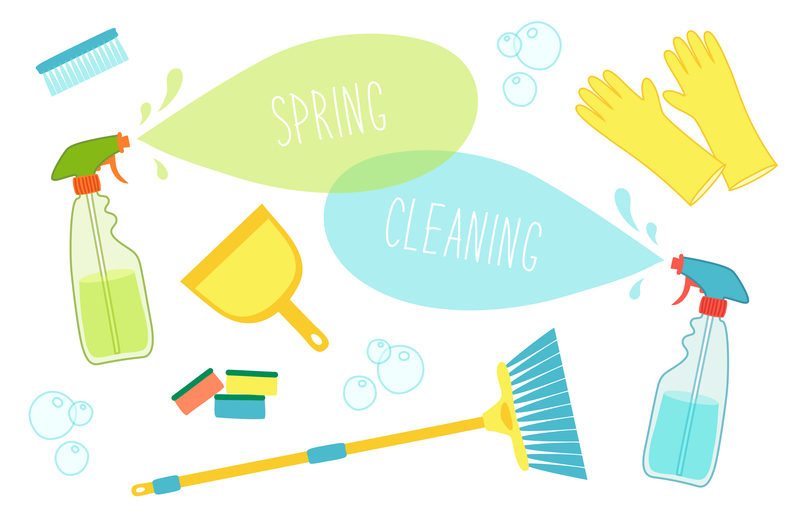Secrets to Easily Removing Stubborn Burnt Stovetop Residue
Posted on 22/05/2025
Secrets to Easily Removing Stubborn Burnt Stovetop Residue
There's nothing quite as frustrating as trying to clean up after a cooking mishap and finding that stubborn, burnt-on residue still clings to your stovetop. Whether you're an avid home chef or only use your kitchen occasionally, learning the best ways to remove burnt-on stovetop residue can save you time, effort, and even prolong the life of your appliance. In this comprehensive guide, we'll uncover expert tips, effective methods, and the secrets to achieving a sparkling-clean stovetop without harsh chemicals or endless scrubbing. Discover everything you need to know about easily removing stubborn stovetop stains and keep your kitchen looking its best!

Understanding Burnt Stovetop Residue
Before you can successfully remove burnt stovetop residue, it's helpful to understand what causes it and why it's so challenging to tackle. This type of residue forms when food spills or greasy splatters are exposed to high heat, causing them to char and bond tightly to the stovetop's surface. Over time, these burnt-on stains become harder to lift with standard cleaning techniques.
Common Culprits of Burnt Stovetop Stains
- Sugar-based spills, such as jam, syrup, or sauces
- Oils and fats splattering during frying
- Boil-overs from pots and pans
- Unattended spills allowed to heat repeatedly
Each type of burnt residue may require a slightly different approach, but the strategies outlined below are versatile enough for almost any stovetop mess.
Step-by-Step Secrets to Removing Burnt Residue
Preparation: Safety First!
- Always turn off the stovetop and let it cool completely before cleaning.
- If your stove is electric, unplug it or switch off at the mains for extra safety.
- Gather cleaning supplies such as baking soda, vinegar, a non-scratch scrubber, microfiber cloths, and gloves.
1. Loosen Burnt Residue with Steam
One of the simplest tricks for loosening stubborn burnt-on food is using the power of steam:
- Place a small pot of water on the stovetop burner (gas or electric) where the residue is most stubborn.
- Bring the water to a boil, then carefully let the steam cover the affected area for several minutes (with the burner off if it's a glass top).
- Allow stove to cool. The steam helps to soften the burnt particles, making them easier to wipe away.
2. The Magic of Baking Soda and Vinegar
Baking soda and vinegar are a dynamic cleaning duo known for breaking down tough, burnt-on stains without damaging your stove's finish.
- Sprinkle a generous layer of baking soda over the burnt residue.
- Spray or drizzle white vinegar over the area. It will fizz and bubble, breaking down the bond between the residue and stovetop surface.
- Let the mixture sit for 10-15 minutes, giving it time to penetrate the stain.
- Use a damp non-scratch sponge or microfiber cloth to gently scrub the area.
- Wipe clean with a fresh cloth and inspect for remaining spots.
Pro Tip: For ultra-stubborn spots, make a paste from baking soda and a little water, apply it thickly, and leave overnight before wiping.
3. Try Dish Soap and Hot Water
Sometimes, the simplest cleaning solution is the best. For light burnt residue, dish soap and hot water can often do the trick:
- Add a few drops of strong dish soap to a bowl of hot water.
- Soak a microfiber cloth or sponge and lay it directly on the burnt area for several minutes.
- Wipe and scrub gently, repeating as needed.
This method is safe for most stainless steel and ceramic glass cooktops.
4. Use a Razor Blade Scraper (For Glass Stovetops Only)
For glass cooktops with hard-to-remove, stuck-on residue, a razor blade scraper can be effective when used carefully:
- Always hold the blade at a 45-degree angle to avoid scratching the glass surface.
- Gently scrape away the softened residue after treating with baking soda/vinegar or steam.
- Never use the razor on porcelain or painted stoves.
Note: Check your manufacturer's warranty before using any sharp tools.
5. Commercial Cleaners and Stovetop Creams
If home remedies aren't enough, there are specialized stovetop cleaners and creams designed for burnt-on stains:
- Choose a product suitable for your stove type (glass, enamel, stainless steel, etc.).
- Follow the label's instructions closely to ensure optimal results and avoid surface damage.
- Always rinse thoroughly after using any commercial chemical cleaner.
Specialized Techniques for Different Stovetop Types
*Glass or Ceramic Stovetops*
- Avoid abrasive pads or sponges, which can leave scratches.
- Stick to non-scratch cloths, and consider specialized glass cooktop creams.
- The razor blade method is highly effective for removing stubborn burnt residue.
*Gas Stovetops*
- Remove burner grates and soak in hot, soapy water.
- Scrub burner caps with a baking soda paste for deep cleaning.
- Use a toothbrush for cleaning around burners.
- Wipe the main stove surface with any of the above home remedies for best results.
*Electric Coil or Solid Plate Stovetops*
- Remove coils or plates according to the manufacturer's instructions.
- Clean coil drip pans in soapy water, using baking soda for extra stain removal power.
- Let plates or coils dry completely before reassembling.
Secret Hacks for Preventing Burnt-on Residue
Prevention is Better Than Cure
Proper maintenance can significantly reduce the risk of burnt residue building up on your stovetop in the first place. Try these preventative measures:
- Wipe up spills immediately while they're still fresh and easy to remove.
- Use pot lids and splatter guards to limit messes while cooking.
- Use cookware with flat, heavy bottoms for even heat distribution and fewer boil-overs.
- Perform a quick daily clean with warm, soapy water to catch any lurking debris before it sets.
Myths and Mistakes: What NOT to Do When Cleaning Burnt Stovetops
Common Cleaning Myths
- Myth 1: Bleach is the best cleaner for all stovetops.
In reality, bleach can harm metal and glass cooktops and leave toxic residues. - Myth 2: Steel wool cleans off burnt stains fastest.
Steel wool is too abrasive for most stovetop surfaces, leading to scratches and permanent damage. - Myth 3: The hotter the water, the better.
Too much heat can crack glass or warp delicate stove parts. Always let the stove cool before cleaning.
Cleaning Mistakes to Avoid
- Scrubbing too aggressively, especially on glass or ceramic cooktops.
- Using harsh chemical oven cleaners on surfaces not designed to withstand them.
- Letting burnt stains accumulate, which makes eventual cleaning far more difficult.
- Ignoring the manufacturer's instructions and voiding your stovetop's warranty.
DIY Natural Cleaners for Stubborn Burnt Stovetop Residue
- Lemon Juice: Cut a lemon in half and rub it directly onto burnt stains. Its natural acidity breaks down residue and leaves a fresh scent.
- Salt: Sprinkle coarse salt over stubborn spots, then scrub gently with a damp cloth for mild abrasion.
- Cream of Tartar: Mix with water to make a gentle scrubbing paste ideal for glass and stainless steel surfaces.
These natural cleaning alternatives are ideal for those seeking eco-friendly and family-safe options for tackling the toughest burnt stovetop messes.
When to Call in the Pros
If you've tried multiple methods and your stovetop still won't come clean--or if your stove has specialty finishes like high-gloss enamel--it might be time to consult a professional appliance cleaner. They have access to industrial-grade products and equipment to revive even the most neglected cooktops.

FAQs About Removing Burnt Stovetop Residue
- Will vinegar damage my stove?
No, white vinegar is safe for most stovetops, but always rinse thoroughly and check your manual for any warnings. - Can I use a steel brush on a gas stovetop?
A steel brush can be used on cast iron grates but is not recommended for the stove's main surface. - Is it necessary to remove burners and grates every time I clean?
Removing them for deep cleaning once a week or monthly is recommended for best results. - What is the fastest way to remove burnt-on residue?
A combination of steam followed by baking soda and vinegar is the most effective for most household messes.
Conclusion: Enjoy a Spotless Stovetop
With the right tools, natural cleaners, and cleaning habits, removing stubborn burnt stovetop residue becomes a simple part of your kitchen routine. Whether you favor classic home remedies like baking soda and vinegar, or opt for specialized stovetop creams, the key is consistency and timely maintenance. Don't let burnt-on stains become a permanent fixture in your kitchen--follow these secrets and restore your stovetop's shine with ease!
Regular, gentle care is the ultimate secret to a residue-free stovetop for years to come.
Share Your Tips!
Do you have your own secret for quickly and easily removing burnt stovetop residue? Share your favorite tricks in the comments below and help others keep their kitchens spotless!





